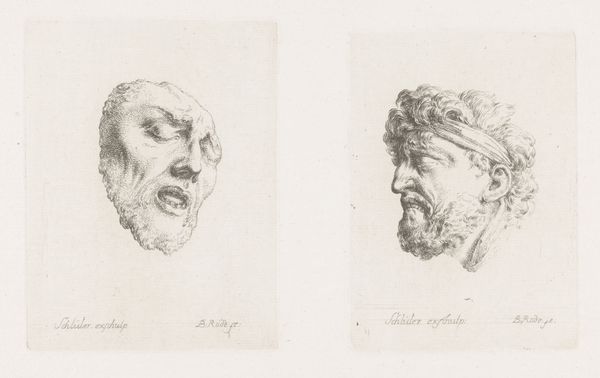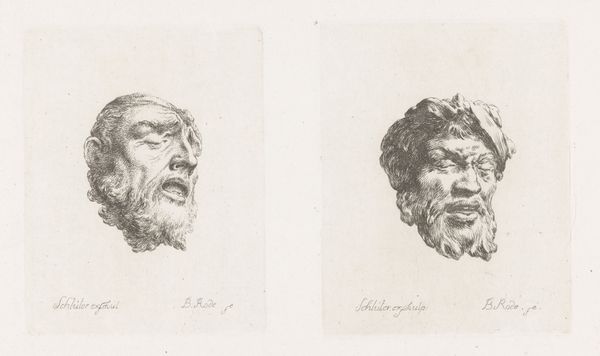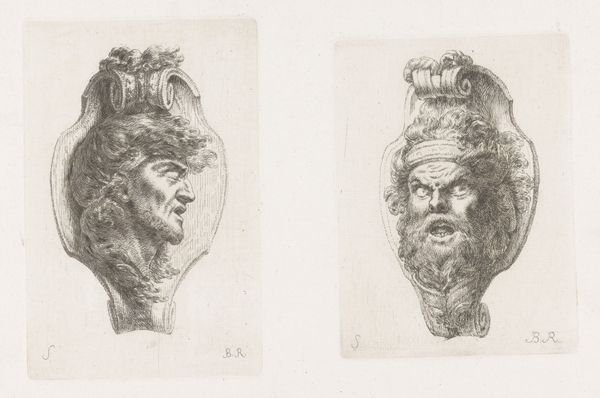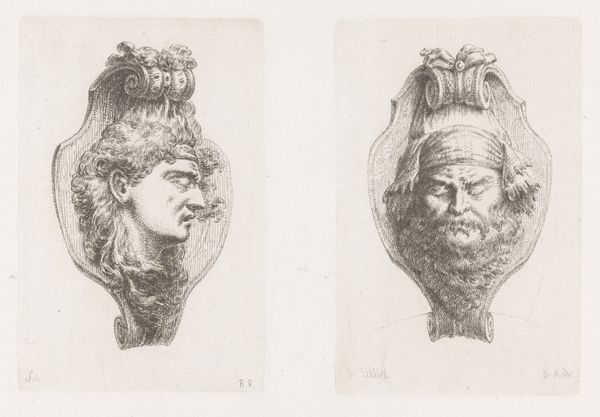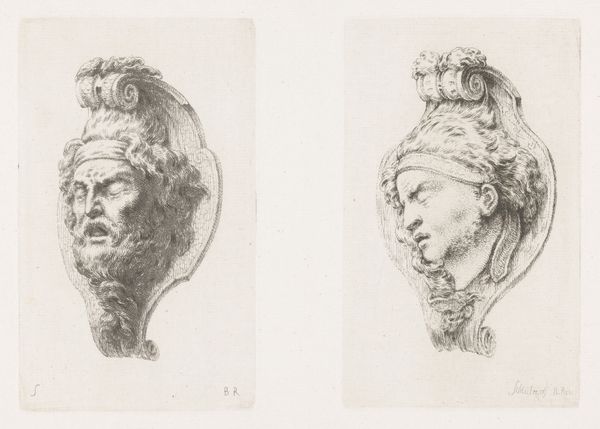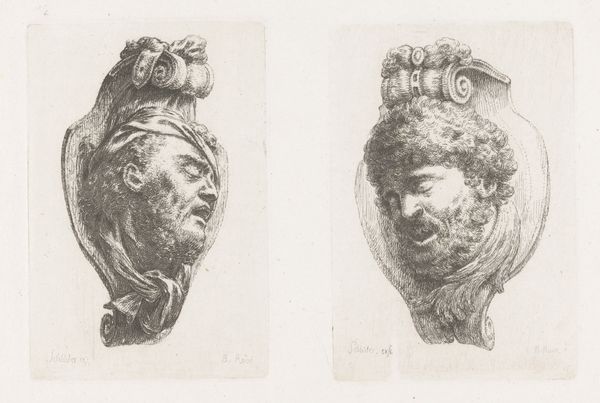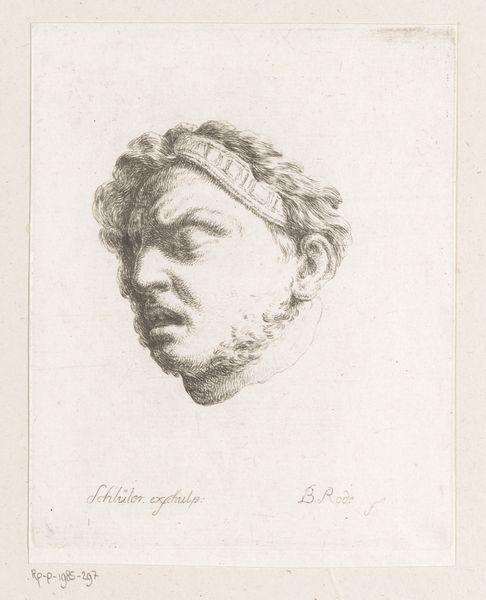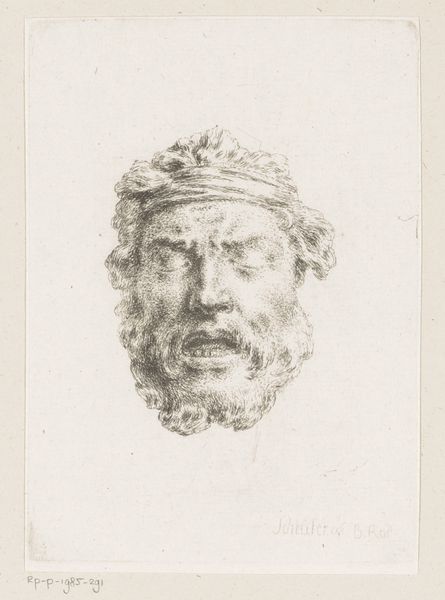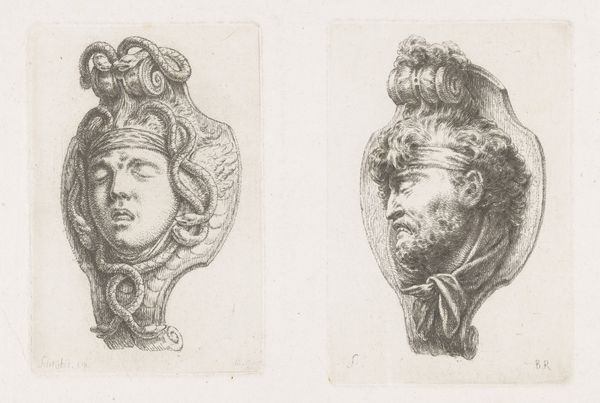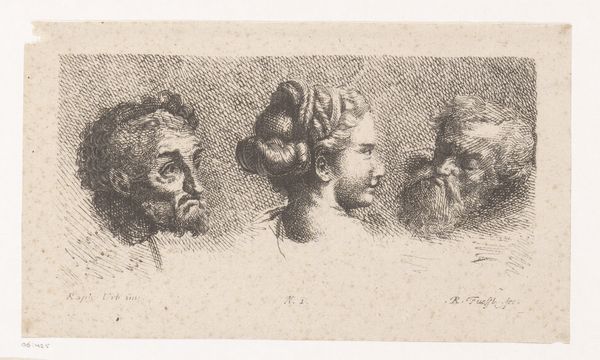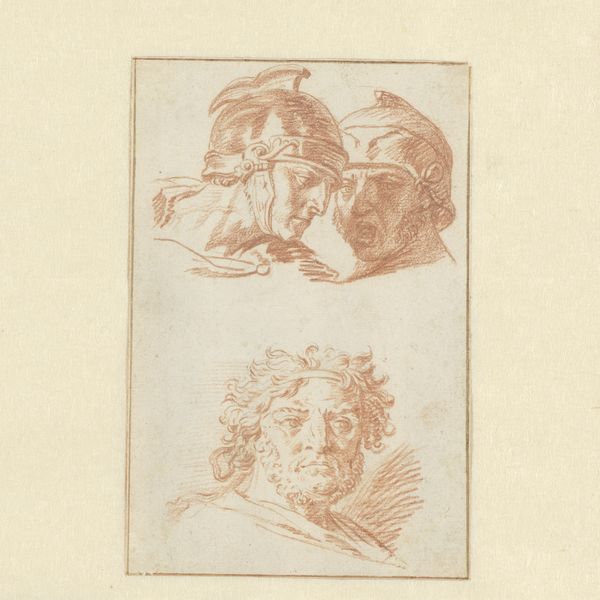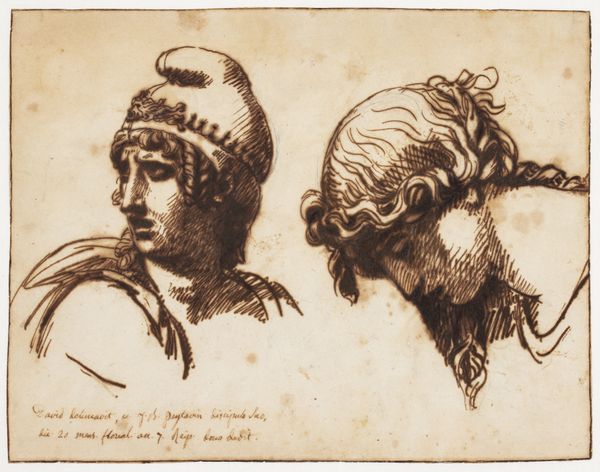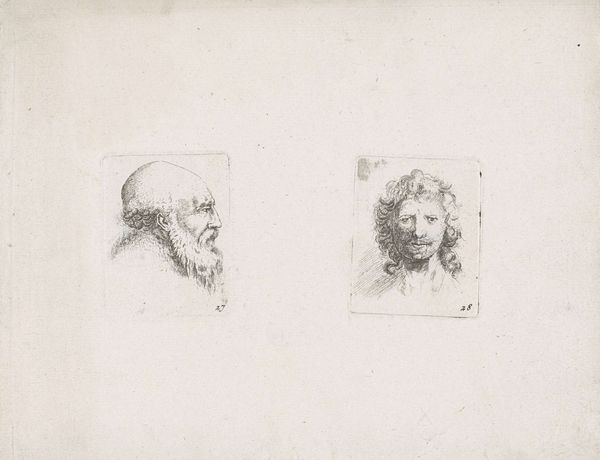
drawing, pencil, charcoal
#
portrait
#
pencil drawn
#
drawing
#
neoclacissism
#
pencil sketch
#
charcoal drawing
#
pencil drawing
#
pencil
#
portrait drawing
#
charcoal
Dimensions: height 144 mm, width 113 mm, height 148 mm, width 119 mm
Copyright: Rijks Museum: Open Domain
Around 1750, Christian Bernhard Rode created these images of two dead warriors, likely on paper using an etching technique. The effect here hinges on the physical properties of metal, acid, and ink. Rode would have coated a metal plate with wax, then scratched his design through it with a fine needle. The plate was then immersed in acid, which bit into the exposed lines. Finally, ink was applied, then wiped from the surface, remaining only in the etched lines. The plate and paper were then pressed together. This was, in essence, an industrial process – a way of generating images in multiples. In this way, printmaking democratized art. Instead of singular paintings available only to the wealthy, etchings like this could reach a wider audience. The linear quality of the etching, while quite different from painting, allowed Rode to economically communicate a full range of emotions, from agony to peace.
Comments
No comments
Be the first to comment and join the conversation on the ultimate creative platform.
